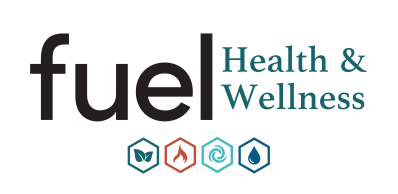Introduction
A torn rotator cuff is a common shoulder injury, particularly among athletes and individuals engaged in repetitive overhead activities. The rotator cuff comprises four muscles that originate on the scapula and insert into the head of the humerus. The main function of the rotator cuff is to stabilize the “ball and socket” of the shoulder joint.1 Symptoms of a tear often include shoulder pain, weakness, and limited range of motion, which can significantly impact daily activities. The appropriate conservative care can promote healing and potentially avoid the need for surgical intervention.
1. Understanding Rotator Cuff Tears
What is the Rotator Cuff?
The rotator cuff consists of four muscles and their tendons that stabilize the shoulder joint and facilitate arm movements.1
Types of Tears:
- Partial Tears: These involve damage to the tendon but do not completely sever it.
- Full-Thickness Tears: These are more severe, with the tendon being completely detached from the bone.
Common Causes:
- Overuse: Repetitive shoulder motions, especially overhead activities, can lead to wear and tear over time.
- Acute Injury: Sudden movements or falls can cause immediate tears.
- Degeneration: Age-related changes can weaken tendons, making them more susceptible to injury.
2. At-Home Pain Management Strategies
Rest and Activity Modification:
It is recommended to avoid activities that exacerbate and worsen pain into the shoulder and rest should be utilized in the case of acute injuries.
Ice and Heat Therapy:
- Ice Therapy: Applying ice packs to the shoulder for 20 minutes, several times a day, can help reduce inflammation and numb pain. However, recent research has show that applying cold may actually inhibit and delay healing.2
- Heat Therapy: Utilizing moist heat, such as a warm bath or heating pad, can relax tight muscles and improve blood flow, aiding in pain relief.3
Over-the-Counter Medications:
Non-steroidal anti-inflammatory drugs (NSAIDs), such as ibuprofen, can help reduce pain and inflammation. It’s essential to use these medications as directed and consult a healthcare provider if symptoms persist. While NSAIDs may reduce pain there is concern that it delay healing as well.4
3. Using Red Light Therapy at Home with the Kineon Move+
What is Red Light Therapy?
Red light therapy, also known as photobiomodulation, is a non-invasive treatment that uses specific wavelengths of light to penetrate tissues, promoting cellular activity, reducing inflammation, and accelerating healing.5
Why the Kineon Move+ is Effective:
The Kineon Move+ device utilizes targeted red and near-infrared light wavelengths, known for their deep tissue penetration and therapeutic benefits. Its design allows for easy application to shoulder areas, making it suitable for addressing rotator cuff injuries.
How to Use the Kineon Move+ for Rotator Cuff Tears:
- Treatment Protocol: Follow the manufacturer’s guidelines regarding session duration and frequency. Typically, sessions may last around 20 minutes, several times a week.
- Application: Position the device over the affected shoulder area, ensuring direct contact with the skin for optimal light penetration.
- Consistency: Regular use is key to achieving therapeutic benefits. Monitor progress and adjust treatment frequency as needed.
Success Stories and Studies:
Clinical studies have demonstrated that red light therapy can effectively reduce shoulder pain and improve function.6 Additionally, users have reported positive outcomes when incorporating devices like the Kineon Move+ into their rehabilitation routines.
4. At-Home Exercises for Rotator Cuff Healing
Importance of Physical Therapy Exercises:
Engaging in specific exercises can strengthen shoulder muscles, enhance flexibility, and restore function. It’s crucial to perform these exercises correctly to avoid further injury.
Key Exercises to Include:
- Pendulum Swings:
- How to Perform: Lean forward, supporting your uninjured arm on a stable surface. Let the injured arm hang down and gently swing it in small circles.
- Benefits: Promotes gentle mobilization of the shoulder joint.
- Isometric Shoulder Exercises:
- How to Perform: Stand next to a wall with your elbow bent to 90 degrees and positioned against the body. Press the back of your hand against the wall without moving your shoulder. Hold for 3-5 seconds and release. Repeat for 10-20 repetitions. Repeat this exercise the other way into internal rotation, this time standing in a doorway with the palm against the door frame.
- Benefits: Activates rotator cuff muscles without excessive strain.
- Side Lying Shoulder External Rotations:
- How to Perform: Lie on your side with a towel under your shoulder in your armpit. Have your elbow bent at 90 degrees flexion. Rotate your shoulder so that your hand moves towards the ceiling. Pause at the top and return slowly to the start position. Repeat for 10-20 repetitions.
- Benefits: Strengthens external rotator muscles of the shoulder.
Tips for Progression:
- Start Slow: Begin with gentle exercises and gradually increase intensity as tolerated.
- Listen to Your Body: Avoid movements that cause pain. Mild discomfort is normal, but sharp pain should be a warning sign.
- Consistency: Regular exercise is vital for recovery. Aim for daily sessions, adjusting based on comfort and progress.
5. When to Seek Professional Help
Red Flags That Require Medical Attention:
- Persistent Pain: If pain continues despite at-home interventions.
- Significant Weakness: Inability to lift the arm or perform daily activities.
- Limited Range of Motion: Difficulty moving the shoulder through its normal range.
Combining At-Home Care with Professional Treatment:
While at-home strategies are beneficial, consulting with a healthcare provider or physical therapist can offer personalized guidance. It is important to seek out a physical therapist that specializes in treating rotator cuff tears, such as those at Fuel Health & Wellness. They can assess the severity of the tear and appropriate interventions.
Conclusion
Managing a torn rotator cuff at home involves a combination of rest, targeted therapies like red light therapy, structured exercises, and vigilant monitoring of symptoms. Utilizing devices such as the Kineon Move+ can enhance the healing process by reducing inflammation and promoting tissue repair. However, it’s essential to recognize when professional medical evaluation is necessary to ensure optimal recovery. By adopting these comprehensive strategies, individuals can effectively navigate the healing journey and restore shoulder function.
About The Author
Dr. Eric Broadworth, PT, DPT, OCS, CDNT, CSCS
CEO of Fuel Health & Wellness | CEO of Fuel Consulting | Partner at Red Light Systems | Host of the Healthy Hustling Podcast
Dr. Eric Broadworth is a dedicated physical therapist and the founder of Fuel Health & Wellness, where he empowers athletes and active individuals to overcome pain and achieve peak performance. With a passion for innovative therapies, Eric specializes in utilizing advanced modalities like red light therapy and laser therapy to enhance recovery and optimize results.
An advocate for movement and performance, Eric has collaborated with elite athletes, including professional athletes of the UFC, MLB, NHL, and CrossFit Games, to help them overcome injuries and reach their full potential. His expertise extends to sports injury rehabilitation, pain management, and injury prevention, making him a trusted name in the fitness and healthcare communities.
Connect with Dr. Eric Broadworth:
- Website: Fuel Health & Wellness
- Podcast: Healthy Hustling Podcast
- Social Media: YouTube | Instagram | Facebook
Eric’s Philosophy:
“Movement is medicine. My mission is to empower people to live healthy, active, pain-free lives so they can keep doing what they love.”
References
- May T, Garmel GM. Rotator Cuff Injury. [Updated 2023 Jun 26]. In: StatPearls [Internet]. Treasure Island (FL): StatPearls Publishing; 2025 Jan-. Available from: https://www.ncbi.nlm.nih.gov/books/NBK547664/
- Wang ZR, Ni GX. Is it time to put traditional cold therapy in rehabilitation of soft-tissue injuries out to pasture? World J Clin Cases. 2021 Jun 16;9(17):4116-4122. doi: 10.12998/wjcc.v9.i17.4116. PMID: 34141774; PMCID: PMC8173427.
- Hotfiel T, Fanlo-Mazas P, Malo-Urries M, Paulino E, Sequeira de Medeiros L, Blondett M, Vetrano M, Freiwald J. Importance of heat therapy in the treatment of pain in the daily clinical practice. J Bodyw Mov Ther. 2024;38:263-268. doi:10.1016/j.jbmt.2024.01.015.
- Duchman KR, Lemmex DB, Patel SH, Ledbetter L, Garrigues GE, Riboh JC. The Effect of Non-Steroidal Anti-Inflammatory Drugs on Tendon-to-Bone Healing: A Systematic Review with Subgroup Meta-Analysis. Iowa Orthop J. 2019;39(1):107-119. PMID: 31413684; PMCID: PMC6604538.
- https://fuelhealthwellness.com/the-science-behind-red-light-therapy-how-it-helps-heal-your-body/
- Abufoul R, Gavish L, Haddad M. Photobiomodulation self-treatment at home after rotator cuff arthroscopic repair accelerates improvement in pain, functionality, and quality of life: a double-blind, sham-controlled, randomized clinical trial. Lasers Surg Med. 2023; 55: 662–673. https://doi.org/10.1002/lsm.23692

